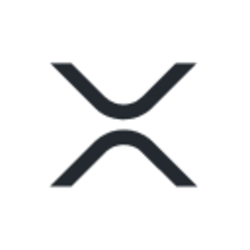- The potential for a specialized S-1 registration form for digital asset securities has recently been highlighted by SEC member Mark T. Uyeda.
- During his speech at the Korea Blockchain Week 2024 in Seoul, he emphasized that the current registration framework might not adequately address the unique characteristics of digital securities.
- Uyeda’s comments reveal a growing concern about regulatory clarity surrounding the classification of cryptocurrencies and digital assets as securities.
This article discusses the recent call for a dedicated registration form for digital asset securities by SEC member Mark T. Uyeda, addressing the current regulatory gaps and the implications for the crypto industry.
The Need for a Dedicated Registration Form for Digital Assets
Mark T. Uyeda has shed light on the necessity of creating a specialized S-1 registration form tailored specifically for digital asset securities. In his address at the Korea Blockchain Week 2024, he underscored the importance of having sufficient frameworks in place that reflect the realities of the rapidly evolving digital asset market. The standard S-1 form, which requires issuers to disclose comprehensive financial information, may fall short in addressing the complexities involved in digital securities.
Regulatory Challenges Highlighted by Uyeda
Uyeda articulated that the existing registration requirements could place undue burdens on digital asset sponsors, insisting that the SEC must ensure these entities are not pressured into making irrelevant or unattainable disclosures. He indicated that the SEC’s engagement with product sponsors to develop tailored guidelines for financial products like index-linked annuities showcases a precedent worth following for cryptocurrencies. As assets such as tokenized bonds and cryptocurrency exchange-traded funds come under SEC scrutiny, the ambiguity regarding broader cryptocurrency classifications continues to pose challenges.
The Ongoing Legal Disputes Surrounding Crypto Classification
Ripple’s Chief Legal Officer, Stuart Alderoty, raised critical points regarding the term “crypto asset security,” arguing that it lacks a clear legal definition and undermines the regulatory framework. This stance is particularly relevant in the context of Ripple’s ongoing legal disputes with the SEC regarding the classification of certain digital assets. Alongside others like Coinbase, Ripple advocates for more explicit regulatory clarity. The murky waters of what constitutes a security within the crypto realm create uncertainty for both issuers and investors alike.
Call for Clarification on Regulatory Standards
When questioned about the SEC’s refusal to grant clarity on Coinbase’s regulatory requests, Uyeda stressed the urgency for the SEC to delineate what qualifies as a security in the digital asset space. He remarked, “It is essential that we acknowledge the duration of regulatory uncertainty regarding digital assets; perhaps it is time to establish some definitive rules.” This sentiment reflects a growing consensus among industry stakeholders that a clear set of guidelines is essential for fostering innovation while simultaneously safeguarding market integrity.
Considering Global Regulatory Perspectives
Uyeda suggested that as the SEC contemplates future regulations, it should take into account not only the domestic landscape but also international frameworks from regions like the EU, South Korea, and Japan. Understanding how these jurisdictions manage digital assets could provide valuable insights and contribute to crafting a more comprehensive regulatory approach that accommodates global standards while addressing local needs.
Conclusion
In summary, Mark T. Uyeda’s advocacy for a tailored S-1 registration form for digital asset securities highlights the critical need for improved regulatory clarity in the cryptocurrency space. The ongoing legal disputes and calls for standards pose significant challenges that the SEC must navigate. As the digital asset landscape matures, it becomes imperative for regulatory bodies to establish guidelines that not only protect investors but also facilitate innovation within this dynamic market.
